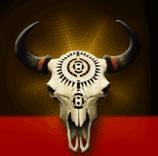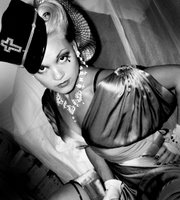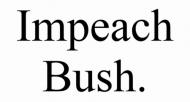Wednesday, December 13, 2006
Links
-
DARK ANGEL DIARY
(for more on the dark angels)
- Reverse Metal
Philip Glass
Rozz Williams
Sex
The Jesus And Mary Chain
Crows
The Vaudeville of Anarchy
Warm Guns
Devendra Banhart
Sadism
Sparklehorse
Murderdolls
Wolves as Parents
Cabaret Voltaire
French Sodomites
Murmurists
World Domination
The Dark Angels...

DARK ANGELS PAST & HONORARYHonorary

DARK ANGEL FRIENDS
Web Pages referring to this page
Link to this page and get a link back!


























2 Comments:
Jean-Baptiste Donatien de Vimeur, comte de Rochambeau
Jean-Baptiste Donatien de Vimeur, comte de RochambeauJean-Baptiste Donatien de Vimeur, comte de Rochambeau (July 1, 1725 – May 10, 1807) was a French aristocrat, soldier, and a Marshal of France.
Military life
Rochambeau was born in Vendome, Loir-et-Cher. He was schooled at the Jesuit college at Blois. However, after the death of his elder brother, he entered a cavalry regiment, and served in Bohemia, Bavaria, and on the Rhine, during the War of the Austrian Succession. By 1747, he had attained the rank of colonel.
He took part in the siege of Maastricht in 1748 and became governor of Vendome in 1749. After distinguishing himself in 1756 in the battle of Minorca on the outbreak of the Seven Years' War, he was promoted to Brigadier General of infantry. In 1758, he fought in Germany, notably in the battle of Krefeld. He also received several wounds in the battle of Clostercamp in 1760. In 1761, he was appointed marechal de camp and Inspector of Cavalry. In this position, he was frequently consulted by the ministers on technical points.
American Revolution
In 1780, Rochambeau was given the rank of Lieutenant General in command of 5,000 French troops and sent to join the American colonists under George Washington fighting the Kingdom of Great Britain in the American Revolutionary War.
He landed at Newport, Rhode Island, on July 10, but was held there inactive for a year, owing to his reluctance to abandon the French fleet blockaded by the British in Narragansett Bay. At last, in July 1781, Rochambeau's force finally left Rhode Island, marching across Connecticut to join Washington on the Hudson River. There then followed the celebrated march of the combined forces and the siege of Yorktown. On September 22, they combined with the Marquis de Lafayette's troops and forced Marquess Cornwallis to surrender on October 19.
Rochambeau's behaviour has been celebrated: he had placed himself entirely under Washington's command and handled his troops as part of the Continental Army. In recognition of his services, the Congress of the Confederation thanked him and his troops and presented him with two cannons taken from the British. These guns, with which Rochambeau returned to Vendôme, were requisitioned in 1792.
Return to France
Upon his return to France, he was honored by King Louis XVI and was made governor of Picardy.
During the Revolution, he commanded the Armée du Nord in 1790, but resigned in 1792 after several reverses. Rochambeau was arrested during the Reign of Terror and narrowly escaped the guillotine. He was subsequently pensioned by Napoleon Bonaparte and died at Thoré-la-Rochette during the First French Empire.
Honors
A statue of Rochambeau by Ferdinand Hamar, was unveiled in Lafayette Square in Washington, D.C., by President Theodore Roosevelt on May 24, 1902, as a gift from France to the United States. The ceremony was made the occasion of a great demonstration of friendship between the two nations. France was represented by ambassador Jules Cambon, Admiral Fournier and General Henri Brugère, as well as a detachment of sailors and marines from the battleship Gaulois. Representatives of the Lafayette and Rochambeau families also attended. A Rochambeau fête was held simultaneously in Paris.
Memoirs
Rochambeau's memoirs, Mémoires militaires, historiques et politiques, de Rochambeau were published by Jean-Charles-Julien Luce de Lancival in 1809. Of the first volume a part, translated into English by M.W.E. Wright, was published in 1838 under the title of Memoirs of the Marshal Count de R. relative to the War of Independence in the United States.
Rochambeau's correspondence during the American campaign is published in H. Doniol, Histoire de la participation de la France en l'établissement des Etats Unis d'Amérique, vol. v, Paris:1892.
OR
As is well known 'Paper, Scissors, Stone', or 'Rock, Paper, Scissors', can also be a diversion between friends to while away the time and see who wins most often; and it is also the basis of the rather less friendly contest known as 'Stinging', which is described on p. 225 under Duels.
Children in London have a fixed idea that 'chinging up' is oriental, and for once a folk-theory may be correct. In Japan it is a commonplace for children to determine priorities, or settle disputes, by waving a closed hand in the air three times, while chanting the meaningless words 'Jan Ken Pon', and them making exactly the same finger formations that British children do, and with the same signification, 'hamasi' (scissors), 'kami' (paper), 'ishi' (stone), or in dialect 'choki, pa, gu'. Indeed, 'Jan Ken Pon' is so ordinary in Japan that even professors resort to it to decide...which of them shall drink the next drink at a draught... Likewise in the great ports of China, if not elsewhere, children and grown-ups alike resort to 'Chai Ken' to decide anything trivial, the decision (in Shanghai) usually being the best of three.
i think it is the later judging by the tear and photo collage nature of this excellent piece.
Paper, Scissors, Stone!
Post a Comment
<< Home